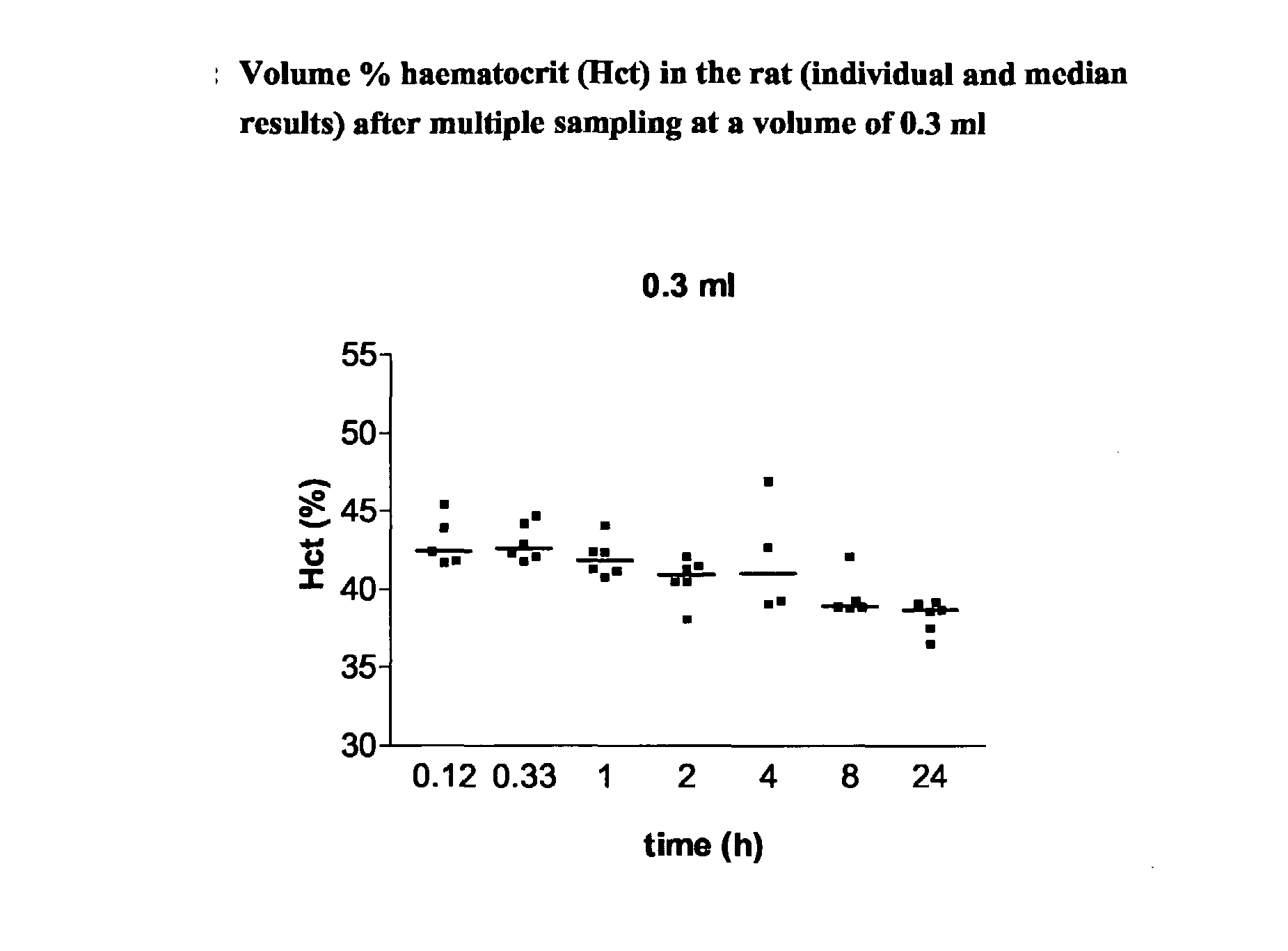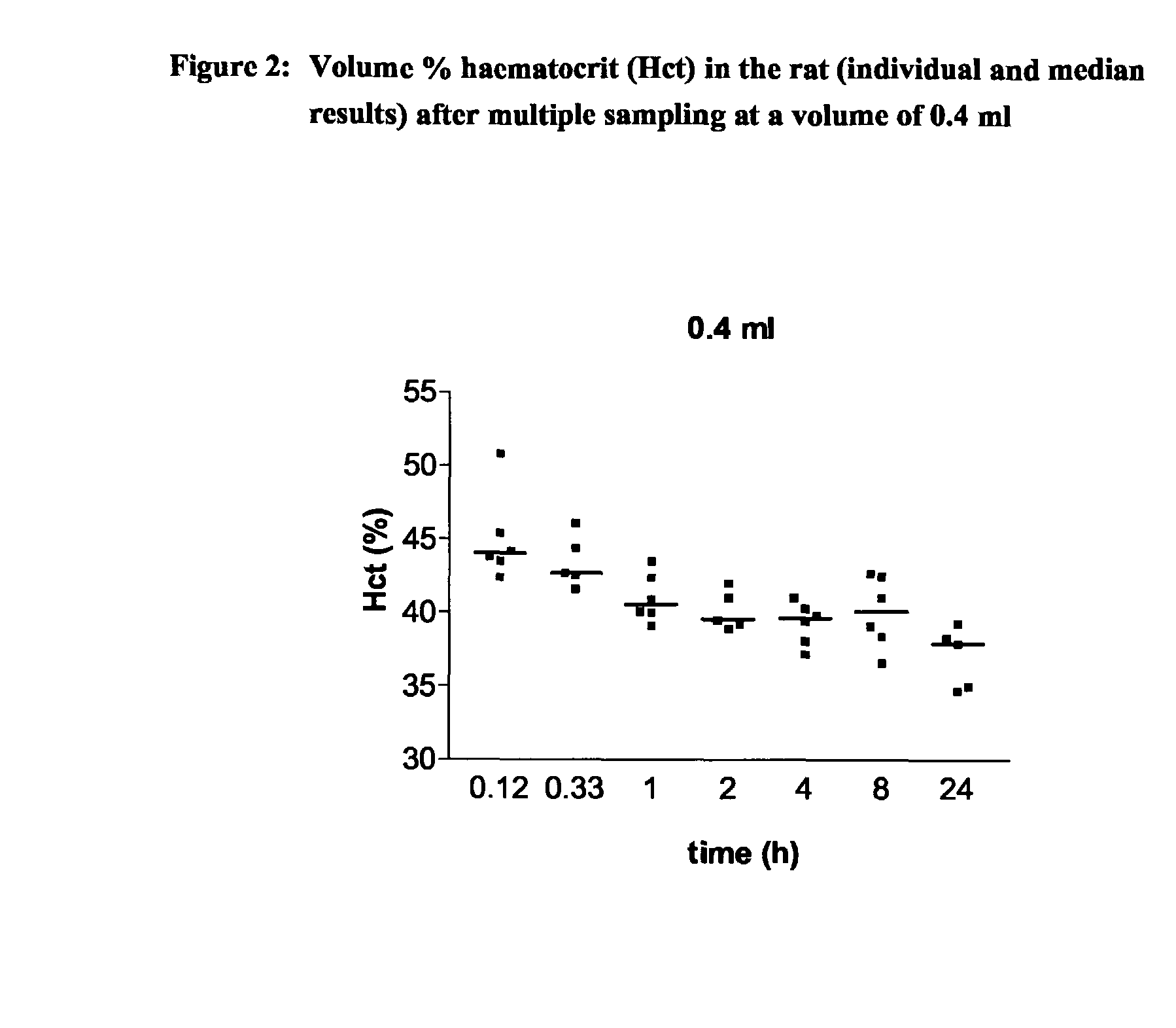Intravenous Drug Administration and Blood Sampling Model in the Awake Rat
a blood sampling model and intravenous drug technology, applied in the field of new intravenous drug administration and blood sampling model in the awake rat, can solve the problems of increasing the possibility of adverse effects and drug-drug interactions in the animal, compromising bioanalysis, and requiring cassette dosing
- Summary
- Abstract
- Description
- Claims
- Application Information
AI Technical Summary
Benefits of technology
Problems solved by technology
Method used
Image
Examples
Embodiment Construction
[0004] The aim of the present invention was to increase the throughput of the in life or in vivo part of routine rat PK studies by designing and validating an analytical method being a combination approach of a new iv administration route using the saphenous vein and blood sampling, in particular multiple blood sampling via the tail vein in the awake rat. This analytical method can also comprise appropriate bioanalytical techniques to allow the processing / analysis of the blood / plasma samples and estimation of the major PK parameters.
[0005] The invention therefore relates to an analytical method for the determination of a pharmakokinetic parameter in the awake rat, comprising the subsequent steps of:
[0006] (a) intravenous administration of a chemical entity through the saphenous vein;
[0007] (b) sampling the blood from the tail vein.
[0008] In the context of this application, a CE is any compound or chemical, either from natural or synthetic origin, such as, but not limited thereto...
PUM
| Property | Measurement | Unit |
|---|---|---|
| time | aaaaa | aaaaa |
| concentrations | aaaaa | aaaaa |
| concentrations | aaaaa | aaaaa |
Abstract
Description
Claims
Application Information
 Login to View More
Login to View More - R&D
- Intellectual Property
- Life Sciences
- Materials
- Tech Scout
- Unparalleled Data Quality
- Higher Quality Content
- 60% Fewer Hallucinations
Browse by: Latest US Patents, China's latest patents, Technical Efficacy Thesaurus, Application Domain, Technology Topic, Popular Technical Reports.
© 2025 PatSnap. All rights reserved.Legal|Privacy policy|Modern Slavery Act Transparency Statement|Sitemap|About US| Contact US: help@patsnap.com



